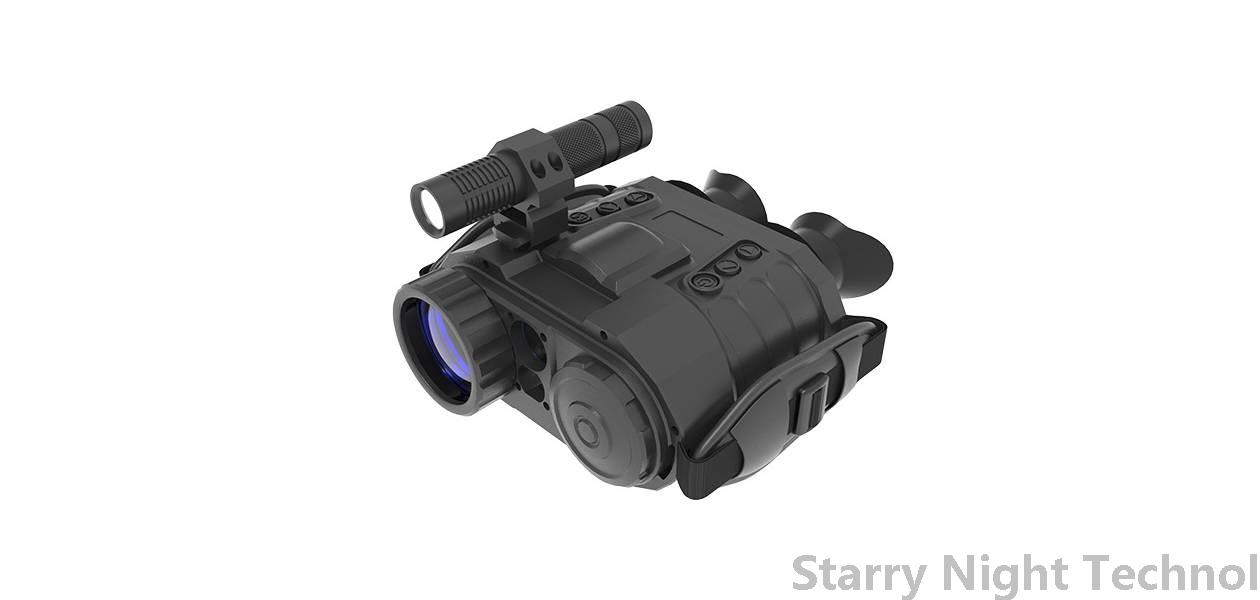Night Vision Devices: Enhancing Precision and Safety in Military and More
1755655215000

The advent of night vision devices marks a significant milestone not just for military operations but also for various civilian applications such as law enforcement, wildlife observation, search and rescue missions, and even entertainment. The primary advantage of these remarkable technologies is the ability to see clearly in low-light conditions, enhancing precision while ensuring safety.
#### The Evolution of Night Vision Technology
Night vision technology began its journey during World War II, where primitive devices were developed for combat use. Initially cumbersome and rudimentary, advancements significantly transformed night vision equipment over the decades. The introduction of image intensification (I2) technology in the 1950s allowed soldiers to enhance their visibility in darkness by amplifying existing light sources, including starlight and moonlight.
Modern day night vision devices can be categorized mainly into Generation I, II, III, and IV, each representing incremental improvements in sensitivity, clarity, and performance. For example:
- **Generation I** devices provide minimal amplification but are cost-effective for recreational uses.
- **Generation II** enhances image resolution using microchannel plates.
- **Generation III**, found predominantly in military applications, boasts advanced gallium arsenide photocathodes for improved light sensitivity and reduced distortion.
- **Generation IV** represents the cutting edge with enhancements like filmless technology that further improves performance under extremely low-light situations.
#### Applications in the Military Context
In military applications, night vision is indispensable. They afford soldiers unprecedented operational capability after dark—effectively blur obstacles between soldiers and successful mission execution. Whether for surveillance, reconnaissance, or direct engagement, clear visibility at night offers tactical advantages that could mean the difference between success and failure on the battlefield.
By utilizing night vision goggles (NVGs), thermal imaging scopes, and designated sniper optics, military personnel can conceal their intentions and gather intelligence without alerting adversaries. Enhanced visual capabilities allow special forces units to navigate treacherous terrains and conduct covert operations seamlessly, diminishing risks associated with confronting enemy forces in traditional daylight scenarios.
Moreover, multi-spectral sensors and thermal imagery have revolutionized how operatives engage with potential threats. By detecting heat signatures from living beings H2O will continue to evolve to develop smarter and more efficient systems capable of targeting threats swiftly.
#### Civilian Applications
While originally designed for military purposes, night vision technology has infiltrated various civilian realms. Here’s a closer examination:
 2. **Search and Rescue (SAR):** Night vision plays an essential role in SAR operations conducted by fire departments, mountain rescue teams, and coast guard agencies. These programs often operate in darkness or adverse weather conditions, making the need for enhanced visuals critical to locating missing persons quickly and safely.
2. **Search and Rescue (SAR):** Night vision plays an essential role in SAR operations conducted by fire departments, mountain rescue teams, and coast guard agencies. These programs often operate in darkness or adverse weather conditions, making the need for enhanced visuals critical to locating missing persons quickly and safely.3. **Wildlife Observation:** Ecologists and naturalists increasingly utilize night vision devices to study nocturnal behavior among animals without disturbing their habitats. This allows researchers to gain insights into animal behaviors that would be difficult to observe otherwise.
4. **Outdoor Recreation:** Activities such as camping, hiking, and hunting have spurred demand for portable night vision apparatus that enables users to explore nature post-dusk. The increased accessibility of affordable night vision solutions now means enthusiasts can capture stunning nocturnal views, bolstering their adventure-filled experiences.
5. **Film and Entertainment Production:** Cinematographers frequently integrate low-light filming techniques to evoke mood and depictions of nighttime settings. Advanced night vision cameras contribute to creating filmmaker dreams by capturing extraordinary shots under poor lighting conditions.
#### Challenges and Future Innovations
Despite the impressive evolution of night vision technology, challenges remain. One predominant issue is dependence on ambient light; many older generation devices struggle in pitch-black environments unless supplemented with infrared illuminators. Moreover, effectiveness can degrade rapidly in extreme climatic conditions like heavy fog or rain.
Nevertheless, continued technological innovation promises exciting shifts for future night vision capabilities. Developments in fused imaging combine regular optics with thermal data, improving overall situational awareness. Emerging augmented reality (AR) principles applied in head-up displays overlay vital information directly onto the operator's field of view—allowing seamless navigation and target identification.
Furthermore, miniaturization caters toward lightweight consumer-friendly designs encouraging broader adoption within both military entities and everyday citizens—with future device iterations prioritizing durability amidst environmental stressors.
#### Conclusion
As we advance technologically, night vision devices become integral assets for enhancing precision and safety across various sectors. Whether protecting soldiers' lives on battlegrounds, assisting police efforts to enforce justice, or enabling conservationists to monitor wildlife responsibly, these devices pave paths toward safer operational frameworks during low-light scenarios. With ongoing research and development, the future holds vast potential for innovative enhancements transforming our understanding and interaction with the world around us—even as darkness falls.
What are some useful night vision devicesStarry Night Technol

